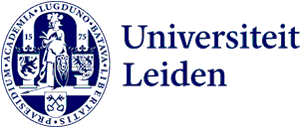Course requirements
Advanced Master Programme Children’s Rights
Course information
Migration and Children’s Rights offers a deep dive into one of the most pressing and complex areas of contemporary law: the legal protection of migrant children. This course equips you with the knowledge and analytical tools needed to tackle challenging legal cases involving children in the context of immigration.
You will explore how multiple layers of law – international, regional, and national – interact to shape the rights and realities of migrant children. Central to the course is the way these legal frameworks influence one another, and how their interplay affects children’s rights on the ground.
Migration takes many forms. This diversity is reflected in the course by examining four distinct migration scenarios: refugee law, the legal protection of unaccompanied minors, family unification, and statelessness. Each topic is approached through the lens of international and regional law.
Theory is brought to life through weekly moot court sessions, where you’ll analyze and argue real-life inspired cases in class. You’ll also benefit from the insights of a guest lecturer, who will provide a deeper perspective on a specialized topic. By the end of this course, you’ll not only understand the legal frameworks governing migration and children’s rights, but also be well-prepared to navigate and apply them in practice.
Course objectives
The primary purpose of the course Migration and Children’s Rights is to provide insight into the legal protection of migrant children in order to enable the students to solve complex cases on different aspects of immigration law relating to children.
Achievement levels
The following achievement levels apply with regard to the course:
Knowledge and comprehension:
The students understand the role of children’s rights in the layered structure of immigration law.
The students comprehend the position of international refugee law within the broader context of national and regional human rights law, and how these legal frameworks interact to shape the protection of refugees.
The students know the most important case law relating to children’s rights in immigration law, including the findings of the Committee on the Rights of the Child.
The students are aware of the vulnerable position of children in immigration law and understand the different forms of legal protection available in the various legal orders studied in the course.
The student has read the most relevant literature relating to the subjects studied during the course.
Application:
The students are able to solve advanced cases relating to children’s rights in the layered structure of immigration law.
The students can apply different notions of international refugee and human rights law in the context of national and regional (human rights) law.
The students can apply their understanding of the role of children’s rights in immigration law in an academic paper.
Analysis:
The students can critically analyse the role of children’s rights in international and European immigration law.
The students can differentiate between the different legal orders which are discussed and can evaluate to which extent children’s rights are effectively protected in these legal orders.
Presentation:
The students can orally present their solution to a complex case in a moot court like setting.
The students are able to write an academic paper relating to one of the subjects discussed during the course
Mode of instruction
Lectures:
Number of lectures : 6
Names of lecturers: Dr. M.A.K. Klaassen and E. Tissandier-Nasom
Required preparation by students: Read prescribed literature and case law, prepare a journal relating to the subject of the lecture
Seminars:
Number of seminars : 5
Names of instructors: Dr. M.A.K. Klaassen and E. Tissandier-Nasom
Required preparation by students: Prepare the cases which are discussed during the moot court session of the seminar
Other methods of instruction:
Guest lectures
Number of instructions : 1
Names of instructors: t.b.c.
Required preparation by students: Read the prescribed literature and/or case law, prepare a journal relating to the subject of the guest lecture
Course Load
Lectures: 12 hours
Seminars: 10 hours
Guest lecture: 2 hours
Assessment method
Written journals on the topic of the lecture to be handed in before two lectures: 20 %.
Pleading statement during one of the moot court sessions: 20 %.
Written academic paper on a prescribed topic (3.000 - 3.500 words): 60 %
Final grade and re-take information:
The final grade for the course is established by determining the weighted average of all the course components. Students have access to a re-take if the grade point average of all the course components is below 6 (fail). It will be up to the discretion of the relevant lecturer/examiner to decide on the form of the retake. The retake may consist of a written retake exam, oral retake exam or any other kind of assessment that is deemed appropriate.
Submission procedures:
All assignments should be handed in via BrightSpace.
Course materials
See under BrightSpace.
Contact
Coordinator of the course: Dr. M.A.K. Klaassen
Email address: m.a.k.klaassen@law.leidenuniv.nl
Disclaimer:
Currently these pages are being updated to reflect the courses for 2025 - 2026. Until these pages are fixed as per 1 September 2025 no rights can be claimed from the information which is currently contained within.
Should there be any future extenuating circumstances which may impinge our teaching and assessment, these could necessitate modification of the course descriptions after 1 September. This will only happen in the event of strict necessity and the interests of the students will be taken into account. Should there be a need for any change during the course, this will be informed to all students on a timely basis. Modifications after 1 September 2025 may only be done with the approval and consent of the Faculty Board and Programme Director.
